We’ve had an expensive year and we agreed not to buy each other Christmas presents this year. Hubby was a sweetheart and broke the rules and he did buy me some paints from our local equivalent of the Dollar Store, so I thought it would be the ideal opportunity to try some acrylic pouring techniques on a budget.
Quick Links
For your convenience, here are store links to items we mentioned in this article.

If you are new to the idea of acrylic pouring, or on a restricted budget, you might want to just give it a try with some cheaper materials before splashing out on something more expensive. You might find that you try it and don’t like it (I don’t think that will happen!) so let’s see how we can start out learning with some basic and affordable paints and supplies to get started.
Supplies for acrylic pouring on a budget:
Paints – dollar store craft paints are fine to get started
Pouring Medium – PVA glue works fine for practice and learning
Surfaces – economy canvases or ceramic tiles (economy canvases here)
An additive for cells (optional) – you probably already have something at home that might work
Cups/pots/sticks– old yogurt pots, glass jars, coffee stirrers etc
Clean and tidy supplies – plastic for your work surface and some paper towels
Video Walk Through: Acrylic Pouring on A Budget
So you don’t need much to get started. You might already have much of what you need around the home. If you fancy giving it a try, just to see if you like it, then grab some cheap paints and supplies and jump right in. Your first few pours will probably not be the best art you’ve ever seen, but keep at it. It can take a few tries to get the paint consistency right, but then suddenly the magic will happen and you’ll be amazed at how much fun this can be!
Here are just a few quick photos of my budget pour using the economy paints with PVA as a pouring medium, on a ceramic tile.
After being told in high school that she was so bad at art that she should switch to another subject, Deby didn’t paint again for 35 years. Then a stroke released a new wave of creativity and she began exploring with dot painting, abstract and eventually acrylic pouring, and at last the joy of working with color returned. You don’t need ‘talent’ to be an acrylic pouring artist – just enthusiasm, some basic instruction, and a willingness to try, fail and try again. Paint along with her and learn from her many mistakes, and you’ll soon make great art together.

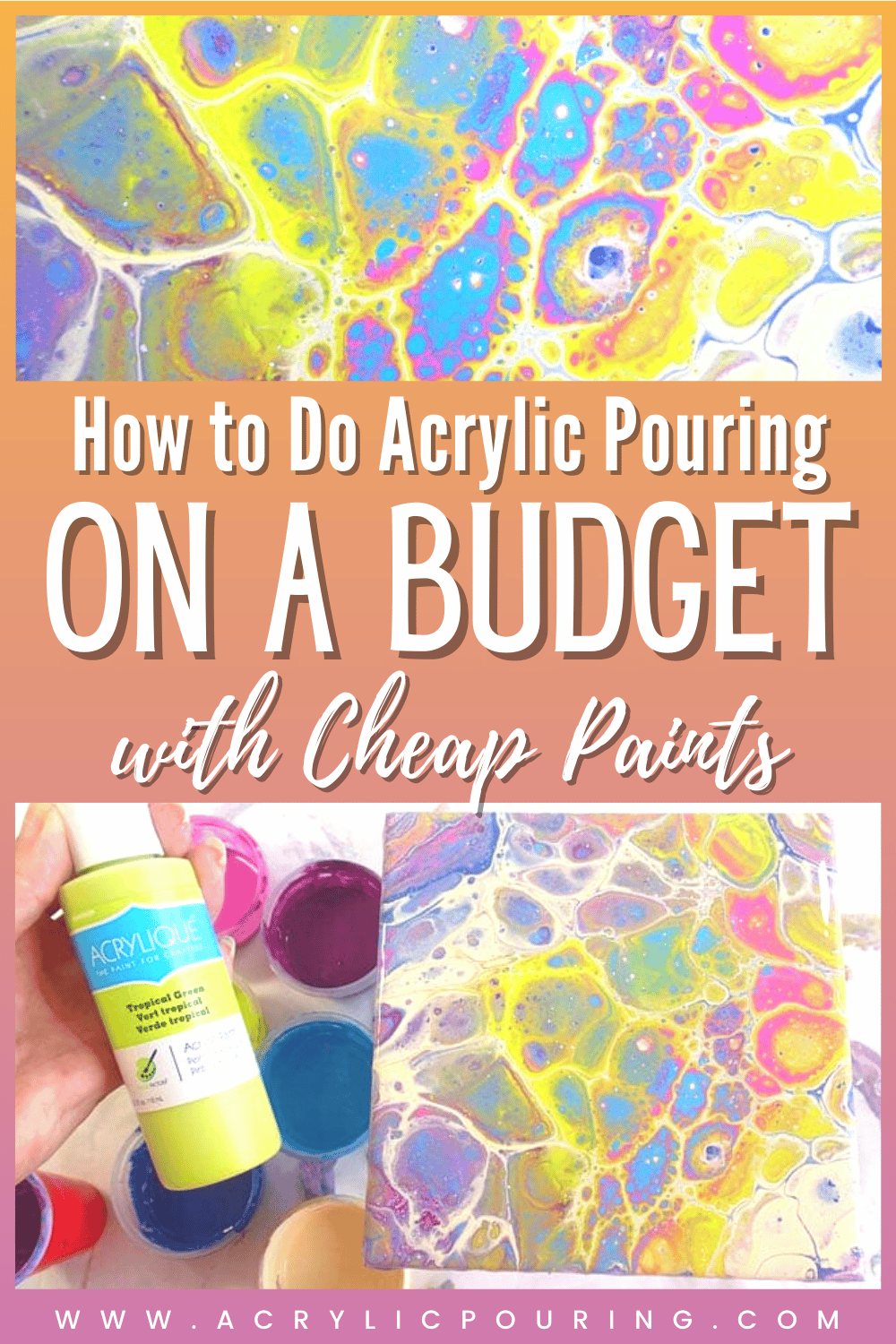
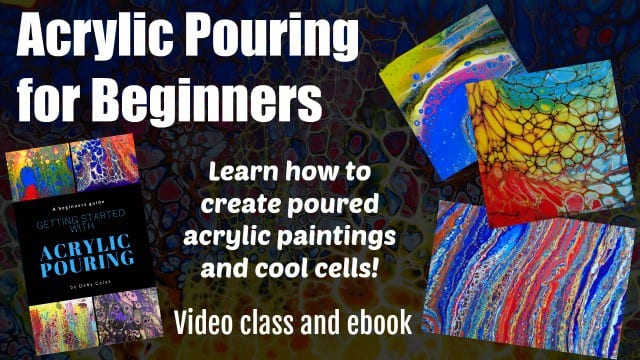
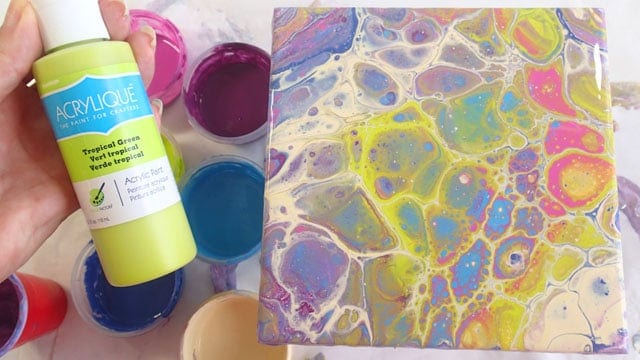
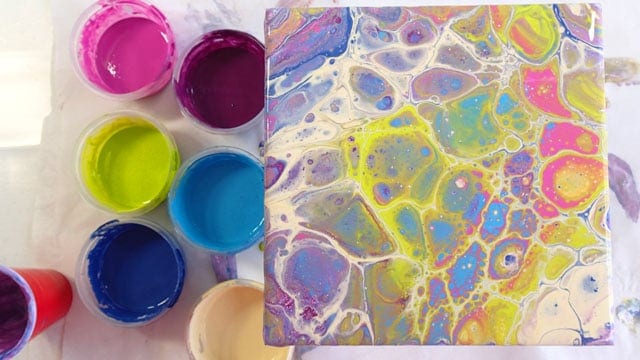
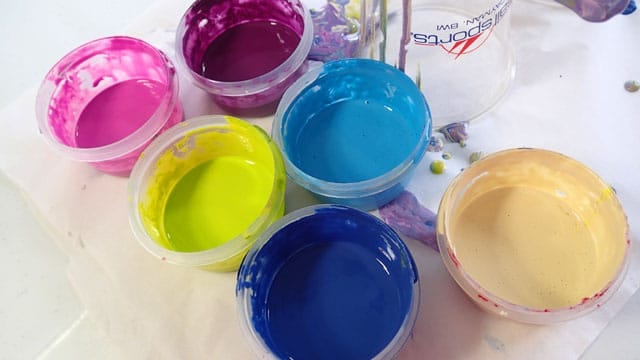
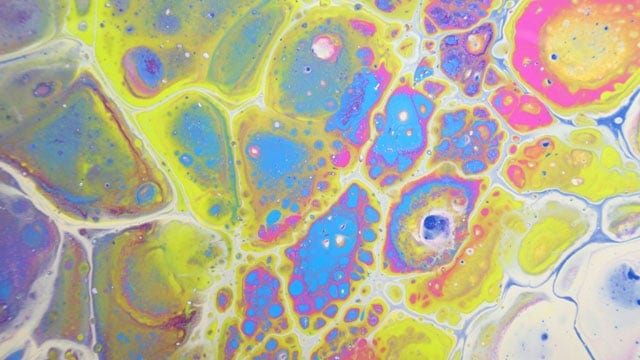
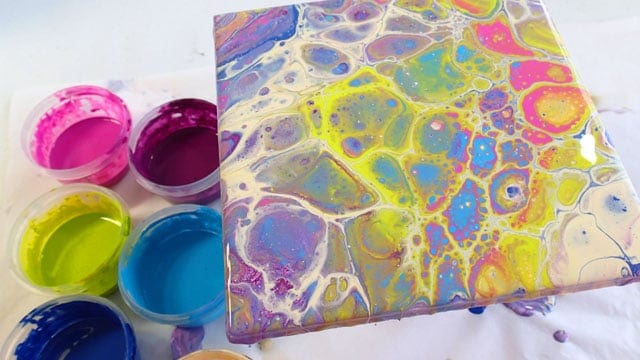
What is pva?
I only get small cells using
Floetrol and treadmill silicone.
PVA is the general purpose white glue – like the Elmers Glue that I showed in the video. It’s available cheaply in craft, DIY and stationery stores. Floetrol is perferable over Glue All though if you don’t mind paying a bit extra.
I watched a pour video where the artist mixed the paint with equal parts Floetrol and glue. They added water to get the right consistency and sprayed on silicone to help with creating cells. Is there a reason to mix glue and Floetrol? Should I use Floetrol alone for best results? I have a huge jug of Elmer’s Glue (used to make slime with a bunch of kids), and would love to use that if possible. Maybe use the glue for my first pours, and if I like what I’m doing purchase Floetrol?
I would really advise against using glue. Even Elmers are warning people not to use it this way. There is an email from them in the group files in our chat group, saying it will crack and yellow if left exposed to the light and air. Better to just use the Floetrol I think, or another artists pouring medium.
How to make 1lt Acrylik pour paint
These are good tips for myself “beginners”. Your Pour on a Budget turned out better than I would have imagined. Thanks for the tips.
Hi There!
You mentioned adding an “additive” but did not say what that is or a brand….any help with that will help a lot!
Lauren
Hi Lauren, good question! There are a few different additives one might choose to use. This video will walk you through a couple of different options: https://www.youtube.com/watch?v=uACi9ttaNDQ
If you were to cover a pour where regular glue was used with resin would that help keep it from peeling and yellowing
Wonderful tutorial, thank you!
Best video I’ve seen on a budget. Thank you sooo much!
I totally agree with you
WOW!! There is so much great information here for someone like me who really wants to give this a shot. But……I’m an over-thinker, & thus far have revised my list of basic supplies needed three times. The pouring mediums and ratios are a little tricky (one mentioned the addition of water?). When my nephew was really little and faced with too much info he would say with such anguish “Man, this is really hurting my brain.” I “kinda” feel like that right now but I’ll figure it out after a coffee. 🙂
Great tutorial! My hubby and I lived in cayman about 6 years ago. We just started paint pouring with our daughters and your tutorial gave us great ideas. Thanks!
In the main article you give PVA as the pouring medium, yet in the following Q & A your reply stated that you do not recommend glue as a pouring medium (also backed by Elmer’s)?? I’m confused!!